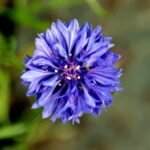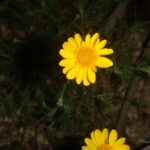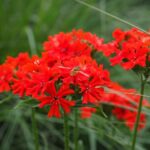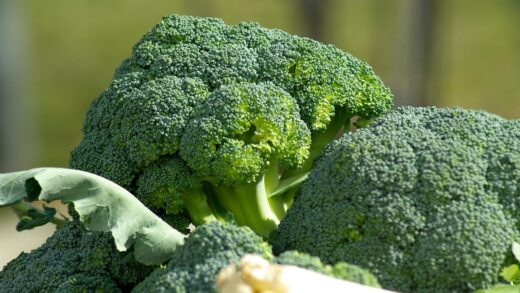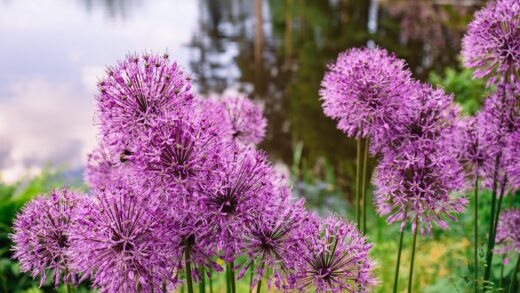Diseases and pests of Maltese cross
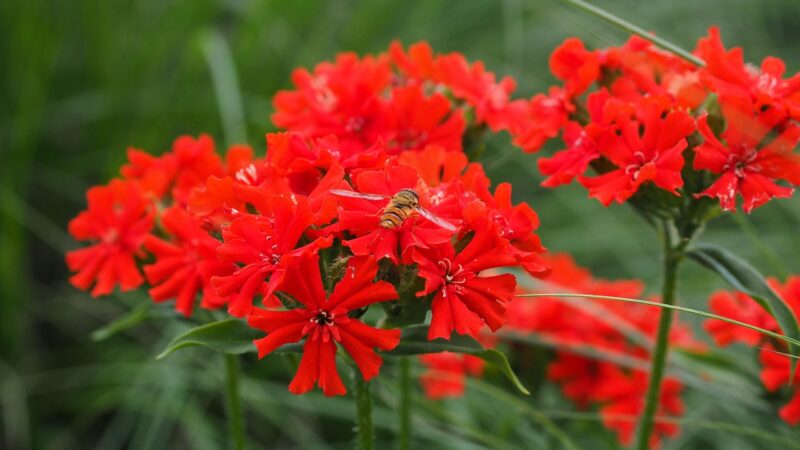
While the Maltese cross is celebrated for its hardy and resilient nature, it is not entirely immune to the challenges posed by diseases and pests. A vigilant gardener who understands the potential threats can easily take preventative measures to keep their plants healthy and thriving. Most problems that arise are directly related to environmental conditions, such as poor air circulation or waterlogged soil. By providing the plant with its preferred growing conditions and conducting regular inspections, you can ensure that these issues are addressed promptly, allowing the plant’s brilliant blooms to remain the star of the show.
Common fungal diseases
The most frequently encountered disease affecting the Maltese cross is powdery mildew. This fungal issue is easily recognizable by the white, dusty patches that appear on the surfaces of the leaves, stems, and sometimes even the flower buds. While it rarely kills the plant, a severe infection can reduce its vigor, cause leaf distortion, and detract from its ornamental value. Powdery mildew thrives in conditions of high humidity, warm days, cool nights, and poor air circulation. It is particularly common in late summer when these conditions often prevail.
Another potential fungal problem, though less common, is rust. Rust diseases appear as small, rust-colored or orange pustules on the undersides of the leaves. If you wipe a finger across these spots, a colored powder will come off. Over time, the upper surfaces of the leaves may develop yellow or brown spots, and heavily infected leaves can wither and die prematurely. Like powdery mildew, rust fungi are favored by humid weather and can be spread by wind and splashing water.
Root rot is perhaps the most serious disease that can afflict the Maltese cross, and it is almost exclusively caused by improper growing conditions. This disease is caused by various soil-borne fungi that attack the plant’s root system in overly wet, poorly drained, or waterlogged soil. The symptoms above ground can be misleading, often appearing as wilting, yellowing leaves, and stunted growth, which might be mistaken for a lack of water. However, an inspection of the roots will reveal them to be dark brown, soft, and mushy, a clear sign that the root system is dying.
Leaf spot diseases can also occasionally occur. These are caused by a variety of fungi or bacteria and manifest as distinct spots or lesions on the foliage. The spots may vary in size, shape, and color, and sometimes have a dark border. While usually a cosmetic issue, severe leaf spot infections can cause significant defoliation, which weakens the plant. These pathogens also tend to thrive in damp conditions where leaves remain wet for extended periods.
More articles on this topic
Key preventative measures
Prevention is unequivocally the best strategy for managing diseases in the garden. The foundation of prevention lies in providing the Maltese cross with its ideal growing environment. This starts with selecting a planting site that receives at least six hours of direct sunlight each day. Sunlight not only fuels the plant’s growth but also helps to quickly dry morning dew from the foliage, making the leaves less hospitable to fungal spores. A sunny location is your first and best line of defense against many common diseases.
Ensuring good air circulation is another critical preventative measure, particularly for thwarting powdery mildew. This can be achieved by giving each plant adequate space to grow to its mature size without being crowded by its neighbors. Spacing plants 12 to 18 inches apart allows air to move freely through the foliage, which helps to lower the localized humidity and keep the leaves dry. Periodically thinning out dense clumps or pruning back encroaching companion plants can also significantly improve airflow.
Proper watering techniques play a vital role in disease prevention. As fungal pathogens thrive in moist conditions, it is essential to keep the foliage as dry as possible. Water your plants in the early morning so that the leaves have the entire day to dry off. Use a soaker hose or drip irrigation to apply water directly to the soil at the root zone, rather than using an overhead sprinkler that wets the entire plant. Most importantly, avoid overwatering and ensure your soil is well-drained to prevent the conditions that lead to devastating root rot.
Good garden sanitation, or hygiene, is the final pillar of disease prevention. Promptly remove and destroy any leaves or stems that show signs of disease to prevent the pathogens from spreading. In the autumn, after the plant has died back, clean up and remove all the dead plant debris from around the base of the plant. This eliminates a primary site where fungal spores and pest eggs can overwinter, reducing the likelihood of problems recurring in the following spring.
More articles on this topic
Identifying common pests
The Maltese cross is not a primary target for most garden pests, but a few can occasionally cause minor issues. Aphids are one of the most common culprits. These small, pear-shaped, sap-sucking insects can be found clustered on the tender new growth of stems and on the undersides of leaves. They feed by piercing the plant tissue and sucking out the sugary sap, which can lead to distorted growth, yellowing leaves, and a general weakening of the plant if the infestation is severe.
Slugs and snails can also be a nuisance, particularly in the spring when the new, tender foliage is emerging from the ground. These mollusks are nocturnal feeders and can cause significant damage by chewing ragged holes in the leaves. During the day, they hide in cool, damp places, so you will often see the evidence of their feeding before you see the pests themselves. A tell-tale sign of their presence is the silvery slime trail they leave behind as they move.
Spider mites are another potential pest, especially in hot, dry conditions. These tiny arachnids are difficult to see with the naked eye, but their damage is more apparent. They also feed by sucking sap from the leaves, which results in a fine stippling or speckling of yellow or white dots on the foliage. In heavy infestations, you may see fine webbing on the plant, particularly on the undersides of the leaves and where the leaves join the stem.
While less common, other pests like leafhoppers or spittlebugs might occasionally visit the plant. Leafhoppers are small, wedge-shaped insects that jump or fly away quickly when disturbed. They feed on plant sap and can cause a stippling pattern on the leaves similar to spider mites. Spittlebugs are easily identified by the frothy, spit-like masses they create on plant stems, inside of which the young nymphs feed and develop. Neither of these pests typically causes significant harm to an established plant.
Integrated pest management
Integrated Pest Management (IPM) is a sensible and environmentally friendly approach that focuses on long-term prevention and control of pests. The first step in IPM is regular monitoring. Make it a habit to inspect your plants closely every few days, checking the tops and bottoms of leaves and the stems for any signs of pest activity. Early detection is crucial, as it is much easier to manage a small pest population before it has a chance to explode in numbers.
If pests are found, the least toxic control methods should always be your first choice. For a small aphid infestation, a strong jet of water from a hose is often enough to dislodge them from the plant. For more persistent problems, insecticidal soap or horticultural oil can be very effective. These products work by smothering the soft-bodied insects and have a low impact on beneficial insects and the wider environment. They must be applied thoroughly, ensuring complete coverage of the pests.
Encouraging natural predators is a cornerstone of organic pest management. A healthy garden ecosystem will be home to a variety of beneficial insects that prey on common pests. Ladybugs, lacewings, and hoverflies are all voracious predators of aphids. You can attract these helpful allies to your garden by planting a diversity of flowering plants, particularly those with small flowers like dill, fennel, and yarrow, and by avoiding the use of broad-spectrum chemical pesticides which can harm beneficial and pest insects alike.
For slugs and snails, there are several effective control methods. Hand-picking them off the plants at night with a flashlight can be surprisingly effective in a small garden. Traps, such as shallow pans filled with beer, can be set to lure them to a drowning death. Barriers of crushed eggshells, diatomaceous earth, or copper tape placed around the base of the plants can also deter them. By using a combination of these strategies, you can effectively manage pest populations without resorting to harsh chemicals.
Specific treatment options
When preventative measures are not enough and a disease or pest problem becomes established, more direct treatments may be necessary. For powdery mildew, several organic fungicide options are available. A spray made from a solution of one part milk to nine parts water can be surprisingly effective if applied in bright sunlight. Horticultural oils, such as neem oil, or a potassium bicarbonate-based spray can also control the spread of the fungus. It is important to apply these treatments at the first sign of the disease and to ensure complete coverage of all affected surfaces.
For rust infections, the primary control method is sanitation. Remove and destroy any infected leaves as soon as they are noticed to prevent the spores from spreading. Avoid working around the plants when the foliage is wet, as this can easily transfer the spores to healthy leaves. In severe or persistent cases, a fungicide containing sulfur or copper can be used, but these should be considered a last resort and applied strictly according to the manufacturer’s instructions.
If you have a heavy aphid infestation that cannot be controlled by water sprays or beneficial insects, insecticidal soap is the next step. This is a specially formulated soap that dissolves the outer protective layer of soft-bodied insects, causing them to dehydrate and die. It must be sprayed directly onto the aphids to be effective and may require repeat applications. Neem oil is another excellent option as it acts as a repellent, a feeding deterrent, and a growth regulator, disrupting the pest’s life cycle.
Dealing with root rot requires a different approach. Since chemical treatments are generally ineffective for this disease, the focus must be on correcting the underlying soil moisture problem. If the plant is in a container, you can try to save it by removing it from the pot, trimming away all the dark, mushy roots with a sterile tool, and repotting it in fresh, sterile, well-draining potting mix. For plants in the ground, improving the drainage of the entire bed by incorporating organic matter is the only long-term solution, though the affected plant itself may not be salvageable.








